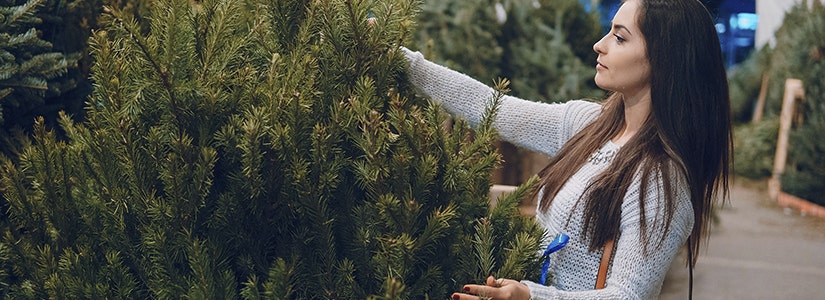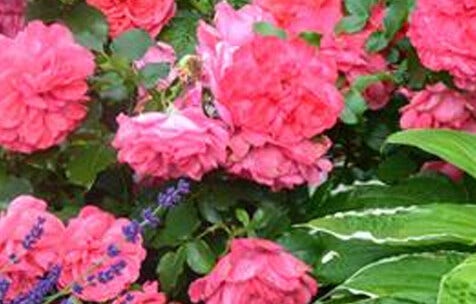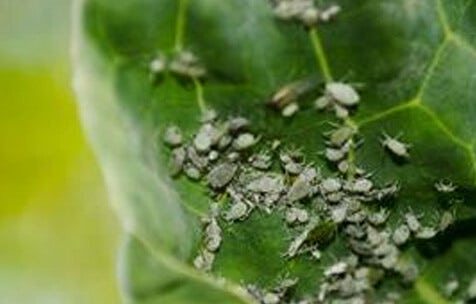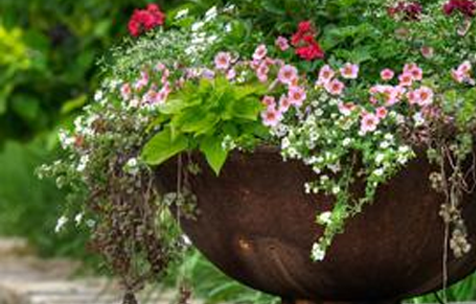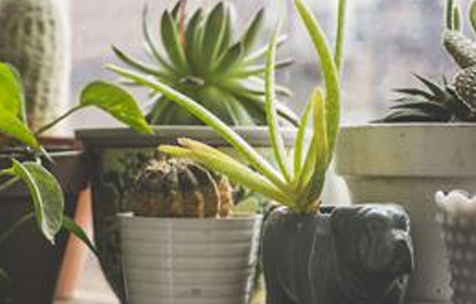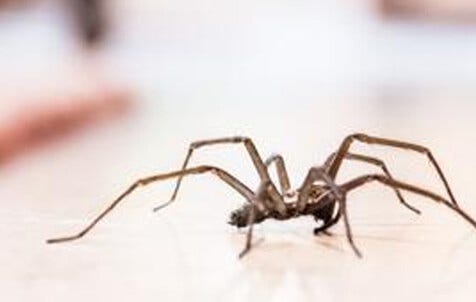

- Home
- Solution Center
- Learn
- Seasonal
- How To Care for Live Christmas Trees
How To Care for Live Christmas Trees
A Christmas tree is more than just a symbol of the season – it often is the centerpiece of holiday décor. These tips on selecting and caring for a live tree will ensure your season is merry and bright.
Check for Freshness
When you’re buying a precut live tree, follow these steps to conduct a freshness inspection:
- Check the color. Color should be rich green without a gray or brown tinge. Exceptions include Colorado blue spruce or juniper – which both have a bluish tinge – and the Southeast’s favorite, Leyland cypress – which has a greenish-gray tint.
- Take a sniff. A fresh tree should have a pleasant smell and remind you of Christmas.
- Grab a branch. Using your thumb and forefinger, hold a branch about 6 inches from the tip. Pull toward you. Fresh needles should spring up behind your fingers and remain attached to the branch.
- Pinch a needle. Fresh needles bend; dry ones break.
- Bump the trunk. Lift the tree and thump the trunk against the ground. Watch for falling needles. If a few drop, that’s fine. Evergreens tend to shed some in autumn, and these needles are often caught on branches.
Home Care
At home, until it’s time to decorate, store your tree in an outdoor location protected from freezing temperatures. A shed, porch, or unheated garage works great.
Make the Cut
Before placing your tree in the stand, remove ½ inch from the trunk base. Making a fresh cut is vital because after three to six hours of being exposed to air, a sap layer forms that prevents water absorption. Make a straight cut. Do not cut at an angle or to form a point. These cuts don’t enhance water uptake and can make it more difficult to secure the tree in your stand.
Tree Stand Tips
- Avoid using a too-small stand. In general, a tree needs 1 quart of water per day per inch of trunk diameter. For a 4-inch trunk, use a tree stand that holds a minimum of 4 quarts (1 gallon) of water.
- Some sources suggest various solutions to enhance water uptake. The National Christmas Tree Association and Cooperative Extension Service recommend using plain tap water.
Troubleshooting
- Expect precut trees to absorb up to one gallon of water in the first 24 hours in the stand.
- Keep water above the cut end of the trunk to prevent accidentally exposing it to air.
- If your tree doesn’t absorb water, grab a branch to check needles for freshness. Measure a tree’s dryness based on the tree itself, not the amount of water in the tree stand. If you cut your own tree (or had it cut for you), it won’t absorb water right away because it’s fresh from the forest.
- Real trees don’t present a strong fire hazard. Less than 0.0004 percent of live trees used each year ignite in home fires.
Which Tree Lasts Longest?
Different trees retain needles longer than others. Firs and pines hold onto needles longest. Spruces are not as famous for needle retention. Of all spruces, white spruce holds needles longest.



